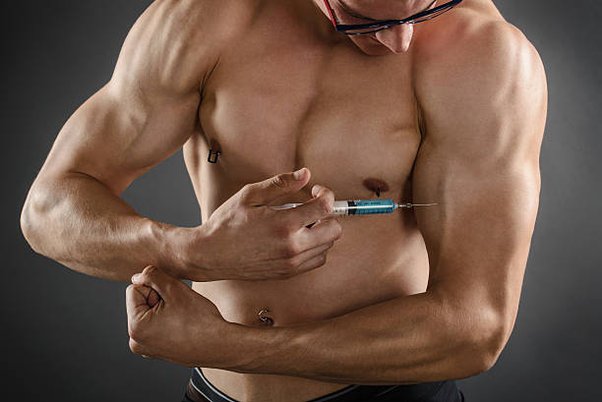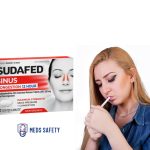10 Dangers and Side Effects of Injecting Steroids

Steroids, commonly known as anabolic steroids, are synthetic derivatives of the male sex hormone testosterone. They were initially developed in the 1930s to treat medical conditions like hypogonadism (a condition in which the body doesn’t produce enough testosterone) and muscle-wasting diseases, such as AIDS and cancer. These synthetic compounds mimic the effects of testosterone in the body, promoting muscle growth and the development of secondary sexual characteristics.
However, over the years, the non-medical use of steroids for bodybuilding and athletic performance enhancement has become prevalent. Anabolic steroids are often misused to gain a competitive edge, build muscle mass, and improve physical appearance. Unfortunately, this misuse comes with a host of potential dangers and side effects, especially when they are administered through injection.
Anabolic steroids encompass a variety of synthetic compounds, with each having distinct properties and effects. Some of the most commonly used types of steroids include:
- Testosterone: The primary male sex hormone, testosterone, is also available in synthetic forms for medical purposes. It is often the base compound for many anabolic steroid products.
- Nandrolone: This steroid is known for its muscle-building properties and is used medically to treat anemia, osteoporosis, and certain breast cancer types.
- Stanozolol: Used to treat hereditary angioedema, stanozolol is favored by athletes for its ability to enhance muscle growth and strength.
- Boldenone: Primarily designed for veterinary use, boldenone is illegally employed to boost muscle growth in bodybuilders.
- Trenbolone: This powerful steroid is known for its potent anabolic effects and is often used by experienced bodybuilders and athletes.
During the 1950s and 1960s, the use of anabolic steroids in athletics and bodybuilding started to gain popularity. Athletes believed these substances could enhance their performance and physique. Notably, the Soviet Union dominated the Olympic Games during this period, fueling the belief that steroids were the key to athletic success.
As the misuse of anabolic steroids spread, concerns about the health risks and ethical implications of their use grew. In the 1980s, several high-profile scandals and deaths linked to steroid abuse brought the issue to the forefront. In this article, we will discuss ten dangers and side effects of injecting steroids.
1. Cardiovascular Issues
One of the most significant risks associated with steroid use is the potential for cardiovascular problems. Steroids can lead to an increase in bad cholesterol (LDL) and a decrease in good cholesterol (HDL), putting users at a higher risk of heart disease and stroke.
2. Liver Damage
Steroids are metabolized in the liver, and long-term use can lead to liver damage, including the development of liver tumors and cysts. This can be life-threatening and may necessitate a liver transplant.
3. Mood Swings and Aggression
Steroid use has been linked to mood swings, irritability, and aggressive behavior, often referred to as “roid rage.” Users may experience heightened anger, impulsivity, and even violent outbursts, which can strain personal relationships and lead to legal problems.
4. Psychiatric Disorders
Long-term steroid use can increase the risk of psychiatric disorders such as depression and anxiety. In some cases, it may lead to more severe conditions like bipolar disorder and schizophrenia.
5. Hormonal Imbalances
Injecting steroids can disrupt the body’s natural hormone production, causing a decrease in testosterone levels. This can result in testicular atrophy, reduced sperm count, and fertility issues.
6. Acne and Skin Problems
Steroids can trigger or exacerbate acne and other skin conditions. The development of severe acne can have a detrimental impact on one’s physical appearance and self-esteem.
7. Hair Loss
Another common side effect of steroid use is male pattern baldness (androgenic alopecia), which can be distressing for those concerned about their hairline.
8. Testicular Shrinkage
The use of anabolic steroids can lead to testicular atrophy, causing the testes to shrink and potentially resulting in infertility. This side effect can be permanent.
9. Gynecomastia
Steroids can disrupt the balance of sex hormones, leading to the development of breast tissue in males, a condition known as gynecomastia. This can be embarrassing and require surgical intervention to correct.
10. Virilization in Women
For female users, steroids can cause masculinizing effects, including a deepening of the voice, excessive body and facial hair growth, and clitoral enlargement. These effects are often irreversible.
How To Overcome Addiction Or Dependence On Injecting Steroids
Overcoming an addiction or dependence on injecting steroids is a challenging process, but it is possible with the right support and strategies. Here are steps you can take to address and overcome injecting steroids:
1. Acknowledge the Problem: The first step in overcoming any addiction is recognizing that there is a problem. It’s essential to be honest with yourself about the negative impact that steroid use is having on your health, relationships, and overall life.
2. Seek Professional Help: Consult a healthcare professional or addiction specialist who can assess your physical and psychological health, as well as the extent of your dependence on steroids. They can provide guidance and develop a personalized treatment plan.
3. Medical Assessment: Undergo a comprehensive medical assessment to evaluate any physical damage caused by steroid use, such as liver damage or cardiovascular issues. This assessment will help guide your treatment plan and monitor your progress.
4. Therapy and Counseling: Psychotherapy and counseling are essential components of overcoming steroid dependence. Consider individual therapy, group therapy, or counseling programs specifically designed for addiction treatment. Cognitive-behavioral therapy (CBT) is often used to address the underlying issues and thought patterns associated with addiction.
5. Support Groups: Join support groups for individuals dealing with substance abuse or steroid addiction. These groups can provide a sense of community and understanding, and they offer a platform for sharing experiences and coping strategies.
6. Set Realistic Goals: Establish clear and achievable goals for your recovery. These may include reducing or eliminating steroid use, improving your physical health, and rebuilding relationships.
7. Address Underlying Issues: Explore and address the underlying emotional, psychological, or social factors that contributed to your steroid use. Therapy can help you identify and work through these issues.
8. Develop Healthy Coping Mechanisms: Learn healthier ways to cope with stress, anxiety, and other emotional challenges. Engage in activities that promote well-being, such as exercise, meditation, or hobbies that provide a sense of purpose.
9. Medication-Assisted Treatment (MAT): In some cases, medical professionals may recommend medication to help manage withdrawal symptoms or cravings. This is typically used in conjunction with therapy and medical supervision.
10. Maintain a Support System: Share your recovery journey with friends and family who can offer emotional support. It’s essential to surround yourself with individuals who understand and encourage your efforts to quit injecting steroids.
11. Stay Committed: Recovery is a long-term process, and setbacks may occur. Stay committed to your recovery plan, even if you experience relapses. Relapses are common but can be used as learning opportunities to strengthen your commitment to recovery.
12. Regular Check-Ups: Continue to see healthcare professionals for regular check-ups to monitor your physical and mental health, as well as any potential complications related to steroid use.
13. Avoid Triggers: Identify and avoid situations or people that trigger the urge to use steroids. Make necessary lifestyle changes to minimize exposure to these triggers.
Remember that overcoming steroid addiction is a gradual process, and it may take time. Be patient with yourself and rely on the support of professionals and loved ones. It’s important to stay focused on your long-term health and well-being.
Conclusion
Injecting steroids for non-medical purposes can have severe and long-lasting consequences on both physical and mental health. The dangers and side effects associated with steroid use are numerous, ranging from cardiovascular problems and liver damage to mood swings, aggression, and severe psychiatric disorders. Additionally, steroid use can lead to hormone imbalances, skin problems, hair loss, and physical changes in both men and women. It is crucial for individuals to be aware of the potential risks associated with steroids and to seek healthier alternatives for achieving their fitness and performance goals. Always consult a healthcare professional before considering any steroid use, and prioritize safe and sustainable methods for achieving your desired results.





